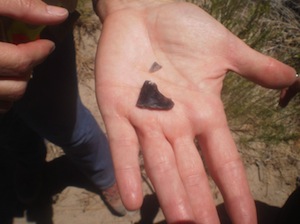
Flakes raise costs
Digital 395 got $9.9 million from the California Public Utilities Commission (CPUC) this morning. As expected, commissioners approved the additional money, as a grant from the California Advanced Services Fund (CASF). Full details are in the final draft of the resolution.
Another $938,000 is on hold, pending environmental reviews and subsequent approval, or not, by the commission.
The money will cover the net cost overruns generated by the project. Originally budgeted at $101 million, 80% of the cost was to be covered by a grant from the 2009 federal broadband stimulus program. CASF covered 19% and the projects principals, including the California Broadband Cooperative (CBC) and local agencies in eastern California, paid the remaining 1%.
But big projects seldom go exactly as expected. Approved in 2010, the Digital 395 project was supposed to be completed in three years. It’s a 530 mile fiber optic network that runs from Carson City, Nevada south to Barstow, California, generally along U.S. Highway 395 and traversing Mono and Inyo Counties east of the Sierra Nevada mountains, with an additional connection to major transcontinental fiber trunks in Reno.
As it turned out, the difficult part was getting approval from the dozens of government agencies – federal, state, local and tribal – that have a say in what can and can’t be done along the route. Two of the three years were spent dealing with issues like endangered desert tortoises, archeologically significant sites and wetlands.
The cost overruns totalled $25 million. Nearly half – $12.3 million – was spent avoiding areas found to be culturally significant during the review process. Another $9.8 million was spent on additional environmental assessment, mitigation and monitoring costs, including $3.7 million allocated to the California Department of Fish and Game to buy extra tortoise habitat. Administrative costs ate up $2 million, Caltrans charged $400,000 more than expected for permits, changes to CPUC pole loading rules cost $300,000 and about $100,000 was spent on a network operating center that was originally thought to be unnecessary.
Offsetting that, the CBC spent $14.2 million less on materials, equipment, personnel, and network infrastructure than originally budgeted. The money approved by the commission makes up the difference. If all the money earmarked today is spent on the project, CASF’s will be paying for 27% of the total cost.
